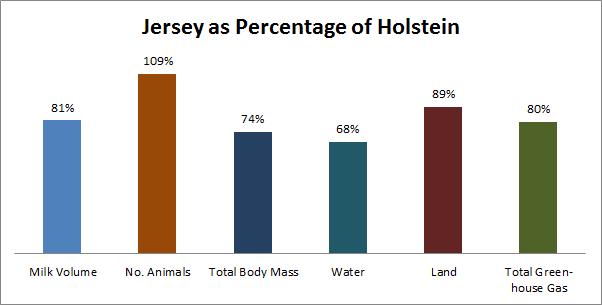Want to know how isoacids can make your cows more productive and lower methane emissions? Keep reading to find out how your dairy farm can benefit.
Summary: Dr. Uden, an assistant professor at the University of Connecticut specializing in ruminant nutrition, discusses the impact of isoacids on dairy cattle. Isoacids, derived from branched-chain amino acids, enhance cellulolytic bacterial activity in the rumen, improving fiber digestibility and potentially increasing milk production by 7-8%. They also influence methane emissions, reducing methane production by 9% and methane intensity by 18% in low-forage diets. These findings suggest isoacid supplementation can significantly boost productivity and sustainability in dairy farming, making them a potential game changer for dairy diets.
- Isoacids are produced in the cow’s rumen by degrading branched-chain amino acids.
- They enhance the activity of cellulolytic bacteria, leading to better fiber digestibility.
- Research shows a 7-8% increase in milk production with isoacid supplementation in high-forage diets.
- Isoacids can reduce methane emissions by 9% and methane intensity by 18% in low-forage diets.
- These findings highlight the potential of isoacids to improve productivity and sustainability in dairy farming.

Did you know that the typical dairy cow produces around 220 pounds of methane yearly, contributing considerably to greenhouse gas emissions? Many farmers continuously seek methods to minimize their production while increasing productivity. What if I told you there is a hidden element that can successfully handle both challenges? This paper delves into isoacids, a game changer for dairy diets that promises to boost bacterial activity, increase fiber digestion, and even lower methane levels. Stay tuned to learn more about this unique addition and how it may improve your dairy farming techniques.
How Isoacids Revolutionize Dairy Digestion and Sustainability
Isoacids are fatty acids that naturally exist in cow rumens. They are the breakdown products of branched-chain amino acids. Essentially, these acids increase the activity of cellulolytic (fiber-digesting) bacteria, allowing the cow to break down and digest fiber more effectively. This procedure is essential for optimizing dairy cow digestion and nutrition absorption.
Meet the Expert: Dr. Uden, Pioneering Ruminant Nutrition Research
Meet the Expert: Dr. Uden is an assistant professor of ruminant nutrition at the University of Connecticut. He received his BS from Bangladesh Agricultural University and PhD from the University of Wisconsin-Madison. Dr. Uden’s most recent study focuses on the effects of isoacids on dairy cattle, specifically how these chemicals might increase rumen bacterial activity, fiber digestibility, and mammary gland efficiency. His discoveries can potentially change dairy production by increasing productivity and sustainability.
Dr. Uden’s team conducted a precisely planned experiment employing a two-by-two factorial configuration. This strategy enables them to investigate the effects of isoacid supplementation under various dietary situations, including high-forage and low-forage diets. The trial included two main variables: forage level and isoacid supplementation. The high-forage diet contained 23% Neutral Detergent Fiber (NDF) produced from forage. In contrast, the low-forage diet included 18% NDF and balanced the non-forage part with highly digestible sources such as corn silage, haylage, and alfalfa hay. This method allowed the researchers to monitor the interplay between forage levels and isoacid supplementation across a ten-week randomized block design investigation.
The goal of this experiment was twofold: to see whether isoacids may increase productivity, especially in high-forage diets where cellulolytic bacterial activity is critical for fiber digestion, and to assess the influence on methane generation, an essential aspect of sustainable dairy farming. Dr. Uden’s team used this thorough experimental design to give valuable insights that might assist dairy producers in adapting their feeding techniques for more excellent performance and lower environmental impact.
Boost Milk Production and Slash Methane with Isoacid Supplementation: Here’s How!
| Diet Type | Isoacid Supplementation | Milk Production Boost (%) | Methane Production Change (%) |
|---|---|---|---|
| High Forage | With Isoacids | 7-8% | Increase |
| High Forage | Without Isoacids | 0% | No Change |
| Low Forage | With Isoacids | 0% | Reduction by 9% |
| Low Forage | Without Isoacids | 0% | No Change |
The research found that adding isoacids to high-forage diets increased milk output by 7-8%. This rise may be ascribed to the increased activity of cellulolytic bacteria in the rumen, which these isoacids promote. Boosting these bacteria enhances fiber digestibility, enabling cows to access nutrients from their diet and produce more milk.
Interestingly, the research also looked at the effects of isoacid supplementation on methane emissions, which revealed a convoluted but hopeful picture. While overall methane generation rose with high-forage diets due to higher fiber digestion, methane intensity per unit of milk remained unchanged. This stability is essential because it shows that, although increased fiber fermentation produces more methane, milk production efficiency compensates for this increase.
On the other hand, low-forage diets offered an exceptionally positive picture. Isoacid supplementation significantly reduced overall methane output by 9% and methane intensity by 18%. This considerable drop shows that isoacids increase production while promoting a more sustainable and ecologically friendly dairy farming paradigm.
These discoveries have far-reaching practical consequences for dairy farmers worldwide. Imagine if your herd could produce more milk while leaving a less environmental imprint. Isoacids in your diet may improve fiber digestibility and cellulolytic bacterial activity. This translates to better milk outputs and increased mammary gland efficiency, especially under high-forage settings.
Furthermore, the significant decrease in methane emissions from low-forage diets should not be disregarded. This makes your farm more sustainable and corresponds with expanding industry and consumer needs for environmentally beneficial agricultural techniques.
It’s time to investigate the distinct advantages of isoacid supplementation for your dairy farm. Isoacids provide a viable approach for increasing production or reducing environmental impact. Don’t pass up this chance to transform your feed plan and improve your agricultural practice.
Did you know?
- Dry matter and NDF digestibility increased significantly in high-forage diets with isoacid supplementation.
- Methane production per cow increased in high-forage diets due to improved fiber digestibility.
- Methane intensity remained stable per unit of milk in high-forage diets with isoacid supplementation.
- Methane intensity decreased by 18% in low-forage diets with isoacid supplementation.
The Bottom Line
Isoacids are proven to be game changers in dairy production. They stimulate the activity of cellulolytic bacteria, improve fiber digestibility, and increase milk production by up to 8%. Not only do they enhance mammary gland efficiency, but they also provide a distinct benefit by considerably lowering methane emissions, particularly in low-forage diets.
Given the varied advantages of isoacids, which range from enhanced productivity to a more sustainable environmental effect, it’s easy to see why this addition is gaining traction. Are you wondering about how isoacid supplements might help your dairy operation? Now could be an excellent time to go further and explore how these research-backed facts might boost your farm’s production and sustainability.













